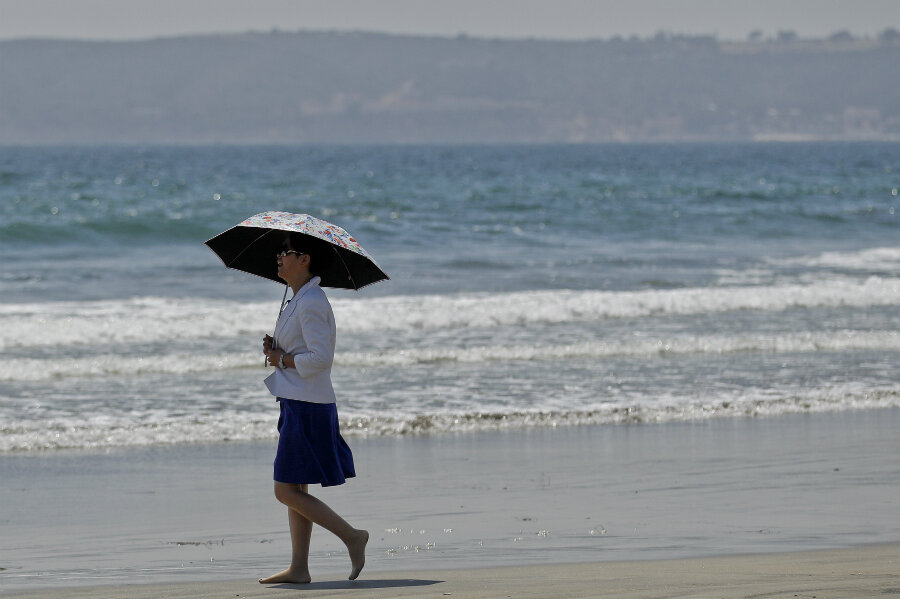Earthquake, tsunami hit Pacific Islands: Why was it barely noticeable?
An earthquake with a magnitude of 7.2 hit the Pacific Ocean between the island nations Vanuatu and New Caledonia on Friday. An initial tsunami warning was issued for those islands and Fiji, but it was later rescinded by the Pacific Tsunami Warning Center because the resulting tsunami only brought normal sized waves curling toward the shore.
This was a fortunate turn of events considering that both islands lie along the "Ring of Fire," a horseshoe-shaped area running around nearly the entire Pacific Ocean, from the Pacific Islands up to East Asia, around to North America and down to South America. The region got its name because there are frequent earthquakes and volcanic activity. About 90 percent of the world’s earthquakes occur in this area.
However, given the characteristics of the earthquake, it is surprising that it triggered a tsunami at all, even a small one.
“You generally need three things to generate a tsunami,” Eric Geist, a research geophysicist who studies tsunami formation at the United States Geological Survey (USGS), tells The Christian Science Monitor. “One is that the earthquake has to be underwater, it has to be a large enough magnitude – generally earthquakes have to be larger than magnitude 6.5 to generate a tsunami – and they have to involve vertical movement of the sea floor so they get their energy from gravity.”
The USGS reported that the earthquake hit 68 miles east of Hunter Island, one of the dozens of islands that make up New Caledonia. At a depth of 6 miles and with a magnitude of 7.2, it was enough to generate a tsunami. (The National Tsunami Warning Center issues tsunami warnings for earthquakes over 7.0 magnitude in the Pacific and over 6.5 in the Atlantic).
But what was interesting about this earthquake is that it wasn’t caused primarily by vertical movement. Friday’s earthquake was a "strike-slip earthquake," when the movement along the fault in the Earth's crust is mainly horizontal, which is less likely to trigger a tsunami.
In fact, according to the National Tsunami Warning Center, only 10 to 15 percent of all damaging tsunamis are caused by a strike-slip earthquake and they typically only affect regions near the earthquake rather than traveling long distances.
While the tsunami was so small it was nearly unrecognizable by the time it reached shore, it was powerful enough to register on tide gauge records.
The Loyalty Islands, which are part of New Caledonia, measured the tide at 0.38 meters (about 14 inches) – noticeable to people swimming or in boats, but not those on the beach, says Mr. Geist. A tsunami typically becomes noticeable to people on land at 0.5 meters (about 20 inches). In comparison, the devastating 1906 San Francisco earthquake, which registered at 7.8 magnitude, created tides only four inches high.
But Geist has some potential explanations.
"It is a surprising size of a tsunami on the tide gauge record for this magnitude of earthquake," he says. "The two candidates for why a measurable tsunami was produced is that it occurred in a region of very steep seafloor where there is this bulldozing effect of water. The second possibility is that the earthquake triggered some kind of underwater land slide."






